5 Strategies To Adopt AI Summaries: A Hospital's Guide To Tackle Physician Burnout


Did you know? According to Innovaccer’s State of AI report, 64% of healthcare professionals claim they are overworked due to the volume of tasks they must finish during their shifts. The additional responsibility of sifting through exponential patient data and extracting meaningful insights from vast repositories for patient charting can overwhelm even seasoned healthcare professionals.
AI can help streamline the charting process through smart summaries and tackle this explosion of patient data. However, organizations must first clarify the need for the implementation of AI tools. The dependency can be justified with the exact use, such as streamlining appointments, improving patient summaries, smart scheduling, etc.
Let’s understand why these smart summaries matter for healthcare organizations and how to leverage them for maximum usage:
Why AI-Enhanced Patient Summaries Matter?
AI-powered patient summaries use large language models to summarize clinical documents. With these modern capabilities, smart summaries can simplify the whole process of patient-physician interaction, empowering physicians to focus primarily on providing better patient care. Smart summaries assist physicians at every step of the appointment and help the hospital staff in reducing the burden by:
- Collating Data In One Place: Structured and unstructured information across disparate electronic health record (EHR) systems is consolidated into a simple set of notes. The tools ingest raw data from sources such as claims and social determinants of health (SDoH) to choose clinically relevant information by specialty and visit type.
- Finding Patterns Physicians Might Miss: The AI models identify different patterns by analyzing responses to treatments and relevant test results. When assessed against contextual trends and evidence-based guidelines, these systems flag any unnatural patterns or medical negligence issues to find gaps in care quality.
- Preparing For Future Contingencies: These advanced summaries extracted from relevant patient data enable organizations to plan resource availability for upcoming visits and provide recommendations to optimize the overall treatment plan. These also help the organizations in intervening proactively and undergoing risk stratification in cases of clinical deterioration.
- Saving Time: The organizations are able to optimize time and resources by providing automated pre-visit questionnaires and instructions to patients to prepare them well for their appointments. The summaries assist in referral management by optimizing document preparation and simultaneously recommending different combinations of resource allocation to save provider and equipment time.
How to Make It Work For Your Practice?
AI-enabled summaries have an immense potential to contribute towards smoother hospital operations, provided the hospital staff has all the right tools and knowledge to leverage them in the best way possible. Without the right implementation methods, no matter how advanced the systems might be for the operations of a hospital, it would complicate the process even further, leading to negative returns on investment (ROI).
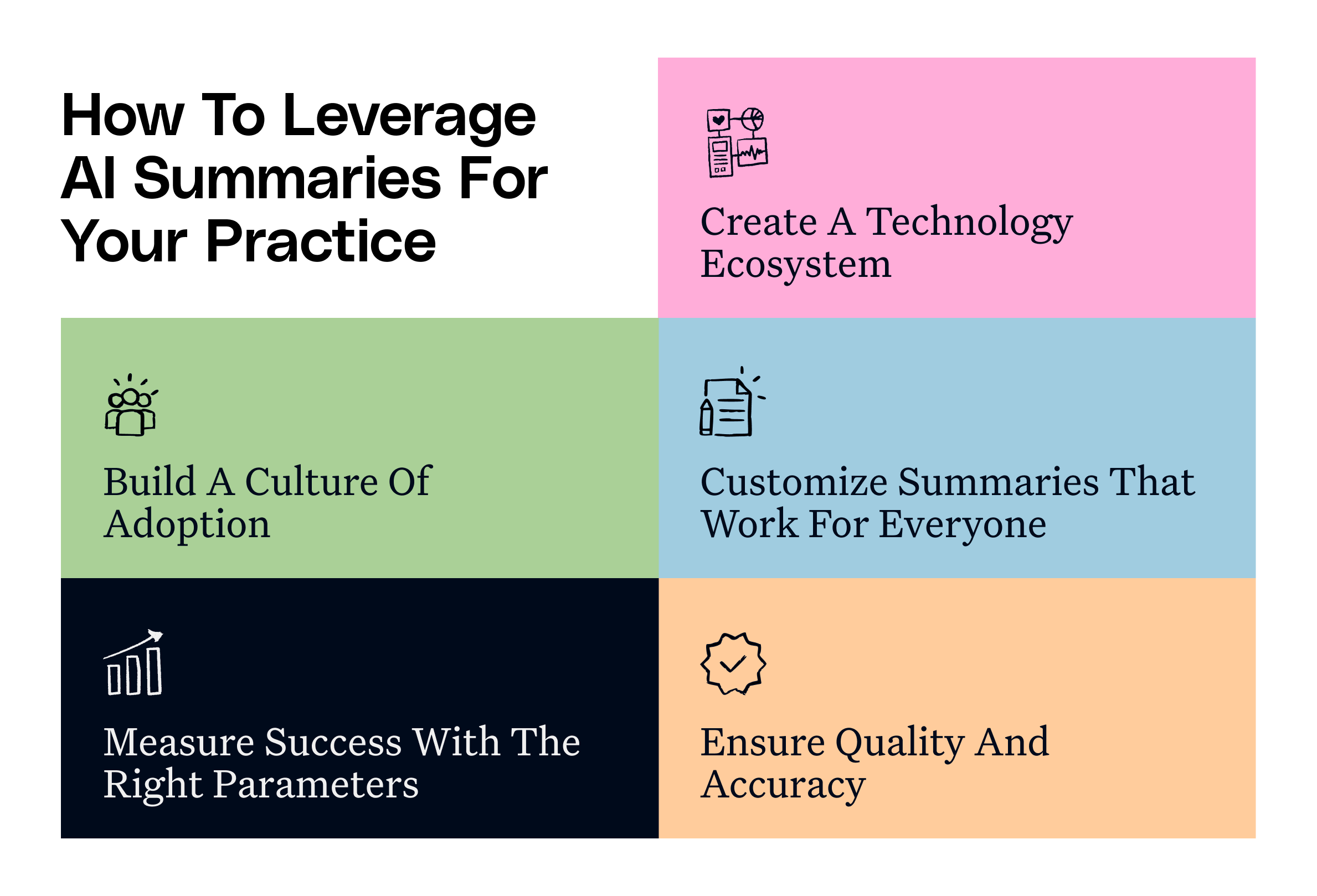
Here is how organizations can ensure the successful implementation of smart summaries:
1. Creating A Technology Ecosystem
Organizations would need to set a system in place so that any new technology can be implemented smoothly into the existing operations. There should be a smooth integration of the new system into the organization’s existing EHR systems with a proper understanding of the cadence of implementing these updates. Organizations should ensure data safety and take measures to control any breaches. The patient should be asked for consent about the usage of their data, with the policies properly mentioning the duration for which this data will be retained.
In terms of data storage, organizations should analyze whether on-site servers or cloud hosting suits their needs and resources. Data storage also takes a lot of computing power and network capacity. Comprehensive backup systems and separate staging versus actual use environments will help handle the data load for the organizations. The interface to be created should be easily usable by different staff roles operating in different device settings, both mobile and desktop. All information presented in the summaries should have a clear demarcation between AI-generated and human-verified information.
2. Building A Culture Of Adoption
Once the technology requirements have been established, support from the staff becomes highly important for a smooth implementation.
- Organizations need to develop training programs for the staff with hands-on practice using real-world examples and quick reference guides for any point-of-need support. The appropriate training routines with clear communication and support will help in addressing any concerns or resistance from the staff.
- Additionally, resistance can be minimized by implementing the system in phases and expanding it gradually. The staff needs to train the systems to generate accurate summaries from the vast information, focusing on smaller chunks of data before combining them into an overall summary.
- Continuous channels to address feedback loops among the staff will help enable a systematic approach to track and resolve issues.
3. Customizing Summaries That Work For Everyone
While training the systems to create summaries, organizations need to identify different use cases and ensure that the summaries are easily utilized according to different patients, their disease complexities, and the different specialties they might need. The systems should provide different summary views for doctors, nurses, and administrative staff with relevant details for each role. Common conditions should have common templates, and specialty-specific concerns or role-specific requirements should trigger custom alerts.
In terms of patient-related customizations, organizations should enable custom summary creation for specific scenarios through scenario-based templates that adjust content for different visit types, context-based AI prioritization that highlights the most relevant clinical information for each specific patient encounter, and user-configurable preferences that allow clinicians to adjust summary views based on their workflow needs.
In complex cases, the summaries can be more detailed with a special focus on multiple medical conditions and potential drug interactions. This will enable a personalized treatment plan on a case-by-case basis without additional burden on the staff to do manual efforts.
4. Measuring Success With The Right Parameters
Once the organization can identify pre-implementation requirements, the right parameters for measuring success need to be identified. According to the manual documentation quality and time, baseline metrics should be established for the AI-generated summaries. The metrics should also include both providers' and patients’ current satisfaction levels with the existing processes. Based on these metrics, the performance of the AI-powered summaries should be assessed, measuring the reduction in after-hours documentation and monitoring how clinicians are using the saved time for patient care activities.
From the patient’s end, organizations need to collect feedback on any differences in wait times and provider attentiveness during visits. They should also assess the clarity of follow-up instructions from the patients.
In terms of preventive care services, organizations should assess if the comprehensive information helped reduce any possible adverse events that could have occurred due to information gaps. For patients requiring assistance for chronic disease management, decreased hospital readmission rates can signify a positive impact of the smart summaries.
5. Ensuring Quality And Accuracy
The comprehensive information covered in these smart summaries can also result in improved ROI, particularly in billing and payment cycles. This generates a need for ensuring good quality summaries with utmost accuracy to minimize the chances of error. Organizations can conduct random sampling by an oversight committee to review system performance and make modifications wherever necessary. Any errors need to be flagged by clinical importance, where the severity of the error can determine the response time. Organizations must be proactive in identifying the root cause of systematic problems and resolving them as soon as possible to ensure the continuous reliability of these advanced systems.
Charting Your Path Forward
Summarizing information often helps providers understand their patients better. The advanced AI summaries can easily tag-team with other AI tools to support physicians in improving care quality instead of overburdening them with additional administrative tasks. The summaries, when curated as per every staff member’s custom needs, can not only help them assist the patients better but also build another level of trust in the patient’s eyes during every appointment or hospital stay. The comprehensive summaries ease the paperwork burden in terms of smoother billing and insurance processes, building the payer’s trust in the process as well.
With the right tools and techniques, organizations can train their tools in a way to ensure a smooth implementation of these summaries into their charting activities, simplifying appointment and referral processes. Successful implementation of such tools can establish the foundation for a long-term vision of AI-augmented clinical practice. Learn how Innovaccer is helping organizations achieve this goal with the help of its solutions. Book a demo today.

.png)




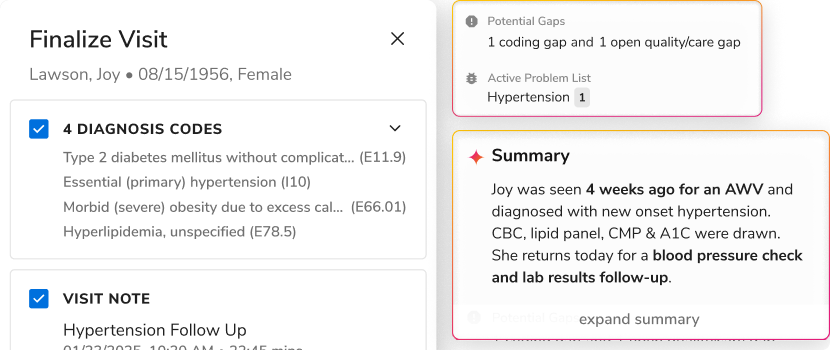
.png)

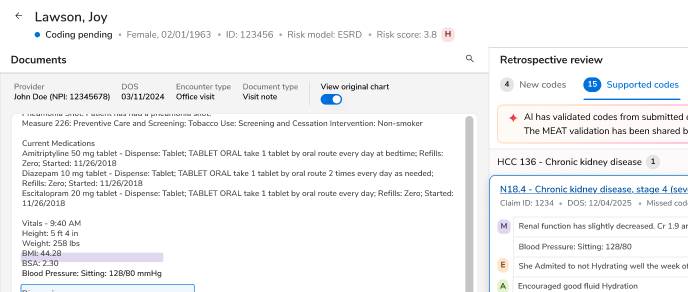
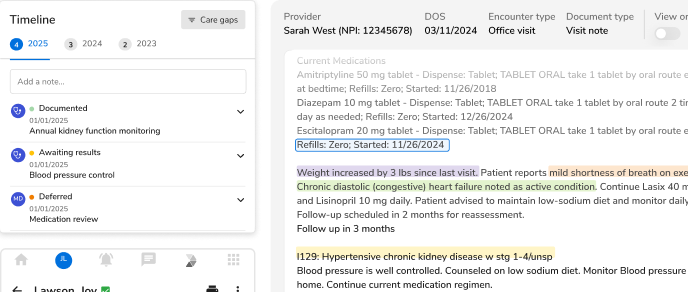
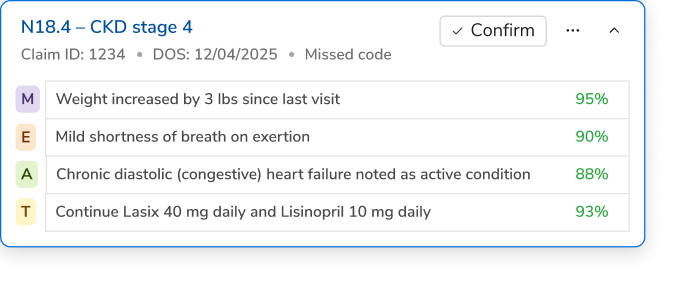





.svg)
.svg)

.svg)

